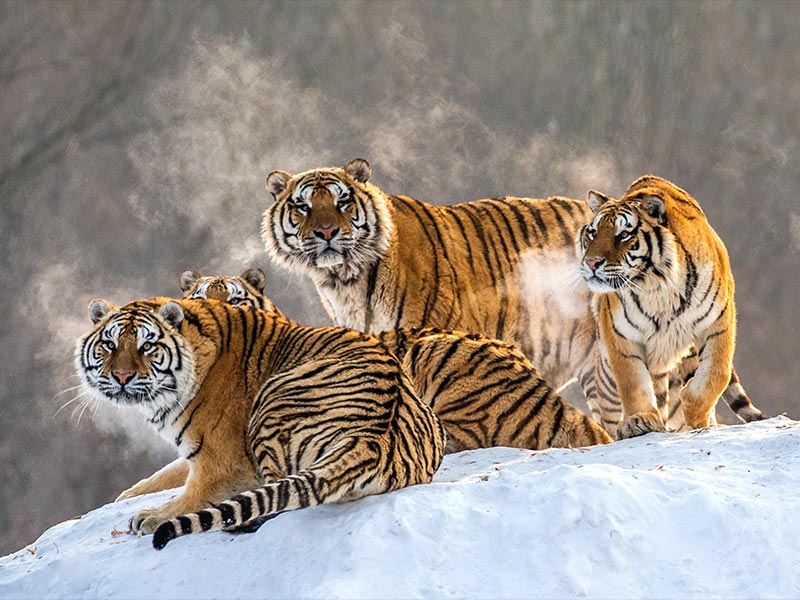Though it might seem strange that tigers—one of the most iconic predators—have bright orange fur, this color actually serves as effective camouflage in their natural habitats. The secret lies in the vision of their prey.
Many animals that tigers hunt, like deer, have dichromatic vision, meaning they perceive the world primarily in shades of blue and green. To them, the orange fur of a tiger doesn’t appear as bright and bold as it does to us humans. Instead, it looks more like muted green or gray, helping tigers blend in with the forests and grasslands where they live. This clever adaptation allows tigers to stalk their prey unnoticed until the last moment.
In addition to color, tigers’ black vertical stripes play a crucial role in their camouflage. The stripes help break up the tiger’s outline, making it harder for prey to detect their approach, especially in areas with tall grasses or dappled sunlight filtering through the trees.
The stripe pattern on a tiger is unique to each individual, much like fingerprints in humans. These stripes not only help with camouflage but also serve as an identifier among tigers themselves. Interestingly, the stripes aren’t just on the fur—they extend down to the skin, so even if a tiger were shaved, its stripes would still be visible!
This combination of seemingly bright orange fur and black stripes works together to help tigers stay hidden and stealthy, despite their size and powerful presence. So, while tigers might stand out to humans, in the eyes of their prey, they are masters of disguise, perfectly suited to their environments! Their impressive camouflage is just one more reason tigers remain such successful predators in the wild.
Related Articles
The Science of Fog—Clouds at Ground Level
Fog might seem mysterious, but it’s simply a low-lying cloud that forms when moist air cools rapidly. When warm air meets a cold surface—like a lake or valley—the water vapor condenses into tiny...
The History of Typewriters—The Machine That Changed Writing
Before computers and keyboards, typewriters revolutionized the way people wrote and worked. The first practical typewriter was invented in 1868 by Christopher Latham Sholes, who also created the...
The Science Behind Static Electricity—Why Shocks Happen
Ever felt a zap when touching a doorknob or pulling off a sweater? That’s static electricity—a buildup of electric charge caused by friction. When two objects rub together (like socks on a carpet),...





